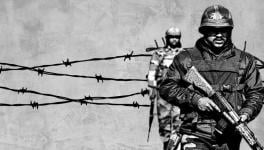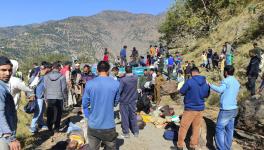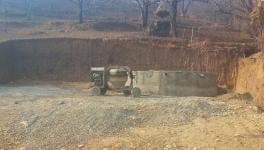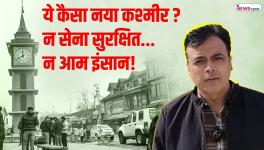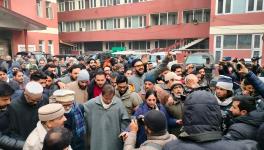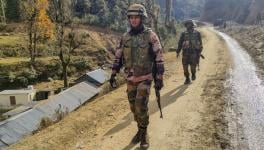J&K’s Keran Valley: An Old Man’s Divided Heart on This Side of the River
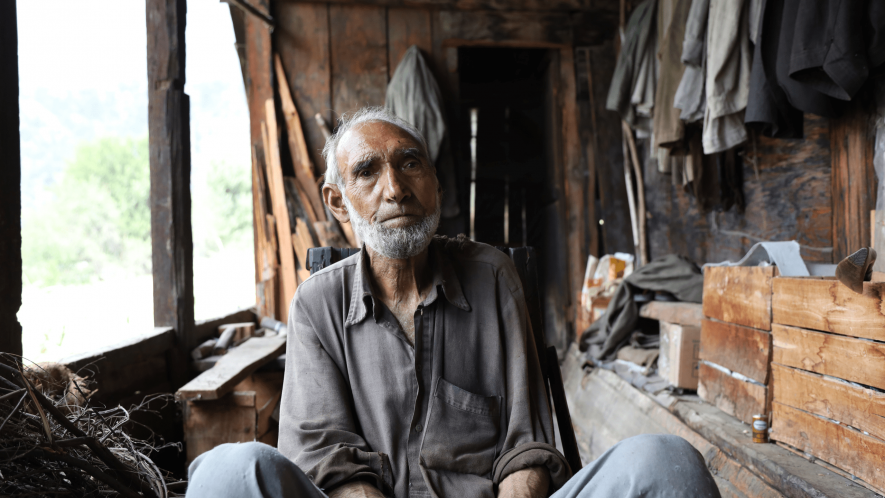
Aurangzeb seated on the balcony of his house. The ‘other side’ is visible in the background.
Aurangzeb Khan, 85, a native of Keran Village, lives a forlorn life in a wooden hovel that was built by his father a century ago. The furniture in his abode looks like from the bygone era, the untouched, abandoned suitcases that belonged to his family, remained covered in dust in one corner.
Khan has experienced every havoc that Keran Valley went through in the past and its transformation. In his dusky village, where most of the wails of people were drowned by the noise of the river that flows by, Aurangzeb lost everything he called his own.
Frequent firing and heavy bombardments near the Line of Control or LoC forced many people to migrate from the region to the other side.
Keran village has an interesting but tragic history that started with Partition, and it is still taking its toll. Located on the banks of the Kishanganga River, 118 kilometres from Srinagar, it is surrounded by lush green forests, meadows, streams and also ancient architecture.
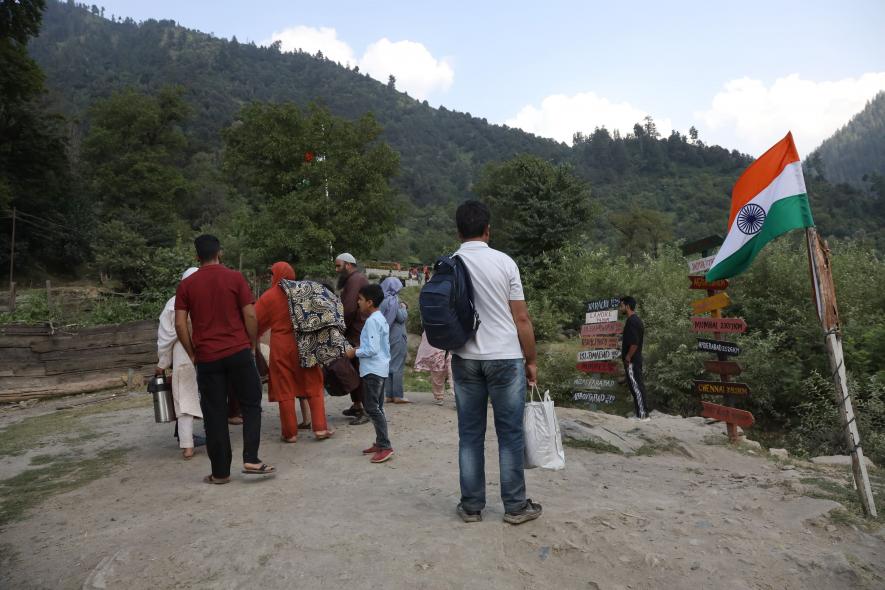
People clicking pictures near Kishanganga River
Tragically, Keran Valley has been in headlines for all the wrong reasons for the past three decades, as it lies in a border area between India and Pakistan. People here have lived in constant turmoil, soon after insurgency began in the 1990s. It was the villagers who had to bear the brunt. Most of them migrated to the other side of the river to escape daily atrocities. Till today, one can see abandoned homes that stand still in the village in a ruined condition.
As daily life gradually eased in Keran Valley after reiteration of the ceasefire agreement between India and Pakistan in February 2021, the J&K administration has now decided to allow tourists into these areas, which earlier were in the news for cross-border shelling and infiltration.
People are visiting these places as peace is returning in these areas. But, at what price for the people?
Aurangzeb recalled, “There were people who got separated from their parents, some who had gone for work, couldn’t see their families again as they had migrated to the other side of the village (Pakistan-Administered Kashmir). The division of the village meant the division of humans, which is the worst of all.”
Speaking in a low voice and pausing after every sentence, Aurangzeb said, “Soon after the insurgency started in the 1990s, many villagers migrated to the other side of the river to escape daily mayhem. My brother and his family, my wife, two daughters, two sons, they all went to the other side and never returned. The line of division was drawn on our chests.”
Back in 1990s, when the situation was grim in the border area of Keran, Aurangzeb recalled that he had returned from Kupwara after a month. He used to work for the Border Security Force back then, had returned to his home after a month. On reaching Keran, he found no one in the house. “I looked for them everywhere, but I found no one, after some time I found most of the houses in my village deserted. My neighbour who didn’t cross the LoC, informed me that my family had migrated to Pakistan Administrated Kashmir,” he said.
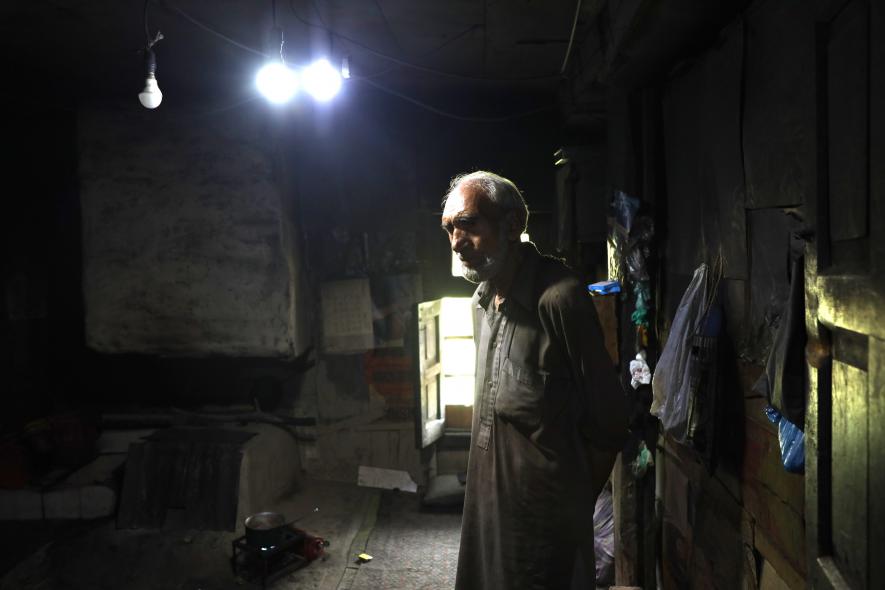
Aurangzeb Khan preparing tea in the kitchen of his deserted house.
Looking forlorn, he added, “So many people around this area migrated to the other side. So did my family, but I never had an urge to go. I have lived here and will do so till I die.” He said since then, he has been living alone.
The only solace for the 85-year-old was that he could see his daughter on the other side of the village, like many others who could identify their relatives, friends and wave at each other. He has no verbal communication with his daughter, but could identify her, when she got married near the banks of Neelam River.
As age takes a toll on his health, Aurnagzeb is stuck in time and lives on memories. He has not seen his daughter for a decade now because of his deteriorating vision. Yet, he makes a tedious journey every single day, coming down from the mountains to the riverside just to catch a glimpse of his daughter who lives on the other side of the LoC. Alas, he can see nothing.
It was six months ago that he had seen them last over an internet video call, but it is getting difficult for him to travel 31 kilometres to Kupwara area, as there is no phone/internet connectivity in Keran Valley.
Aurangzeb’s regular days now just pass by looking and talking to visitors/tourists who are now stepping into the unexplored Keran Valley.
Get the latest reports & analysis with people's perspective on Protests, movements & deep analytical videos, discussions of the current affairs in your Telegram app. Subscribe to NewsClick's Telegram channel & get Real-Time updates on stories, as they get published on our website.









